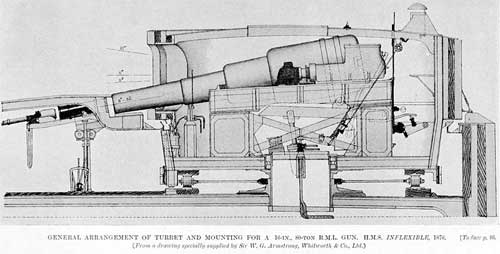Woolwich guns were made at the Royal Gun Factory in Woolwich on the east side of London. The type has come to personify the ultimate development of the muzzle loading rifled heavy gun.
mk2.jpg)
11 inch gun with studded projectile from Wikimedia user geni
Most British big guns were built up in stages. They started out with a steel rifled tube as the innermost part. The Brits in the mid 1800's were still having their problems with steel, and didn't trust it to a great degree. However, it was recognized that steel was superior to keep the rifling intact. To get more strength successive coils of wrought iron were shrunk over the original steel casting, with larger and larger coils towards the rear of the gun where all the pressure originated. To simplify construction of the guns, a Mr. Fraser of the arsenal reduced the number of coils and made them thicker, hooked them together and used welding instead of shrinking the coils over the inner tubes. These guns were made at a third of the cost of the Armstrong system.
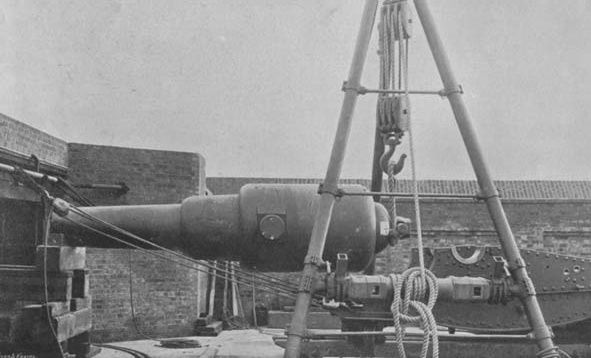
The rifling was also unique. It consisted of a few broad shallow grooves, into which fit bronze studs fixed to the projectile that imparts spin in flight. The smaller guns had uniform rifling, the same twist from end to end. The larger guns had gain twist rifling, which increases the spin towards the bore's exit. Some later guns dispensed with the studs, most notably the 80 ton gun, and used a gas check system commonly used on Armstrong guns. The gas check was fixed to the rear of the projectile to protect against explosive gases bypassing the projectile in the bore, and it was made of something soft, like copper, to take the rifling and impart spin to the projectile.
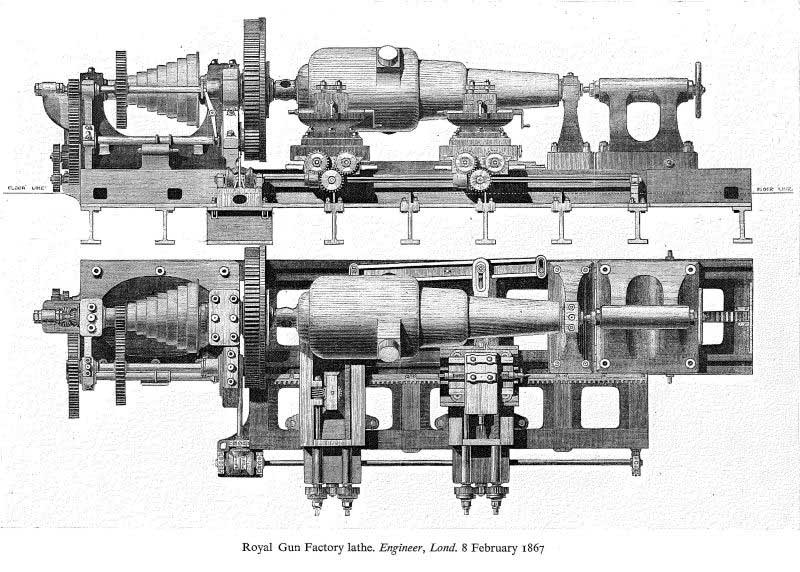
The safety of the guns were proven over time. One famous incident involving a Woolwich gun was an explosion of a 12 inch gun on the British Devastation class battleship, the Thunderer in 1879. The explosion killed eleven men and wounded 35, and was one of the reasons the British Navy turned away from muzzle loading guns. It was determined that the gun had 2 loads in it, leading to the wrecking of the gun.
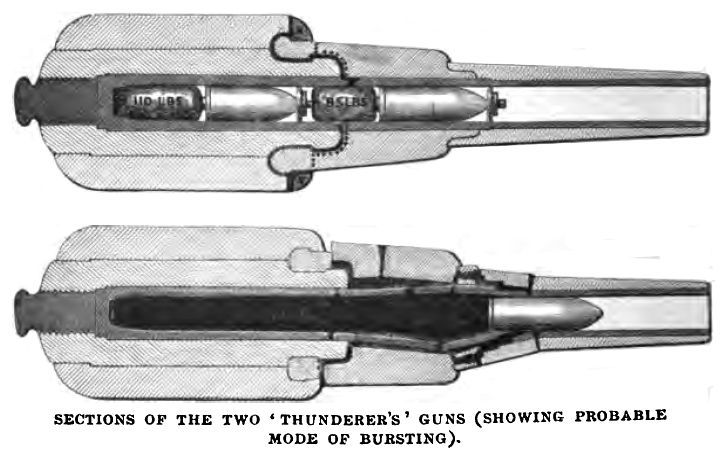
.jpg)
The guns came in sizes from 6 1/2 inch bores and 6 1/2 tons, to the big boys of 16 inch bores and 80 tons. The smallest gun was the 64 pounder, for the weight of the shell, and had a 6 1/2 inch bore. The big guns, the 16 inchers, were mounted in one ship, the H.M.S. Inflexible in 1880, before being declared obsolescent. The shell weighed in at 1600 pounds and each shot used 450 pounds of gunpowder!
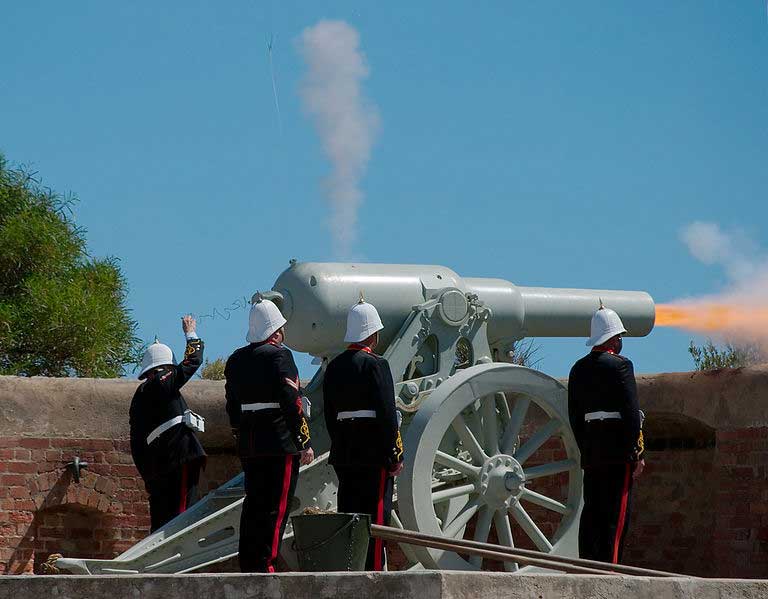
64 pounder firing from Wikimedia user Peripitus
